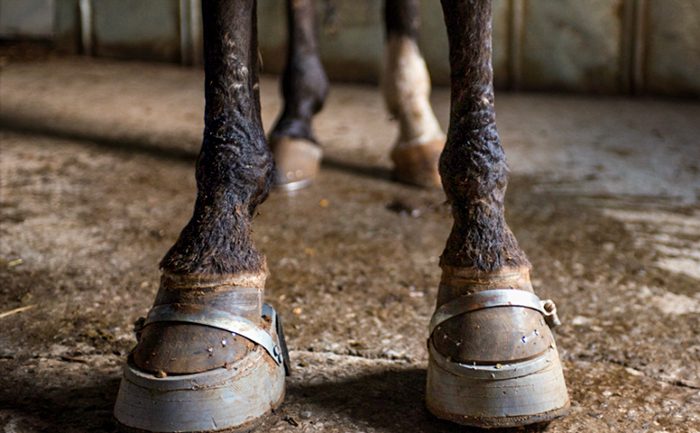The Animal and Plant Health Inspection Service (APHIS) is opening a public comment period to withdraw a 2017 final rule to amend the Horse Protection Act.
The United States Department of Agriculture’s APHIS launched a bid in 2016 to strengthen the anti-soring laws. As it specifically pertains to farriery, the proposed rule prohibited the use of all action devices — except certain boots — and all associated lubricants; as well as all pads and wedges, unless prescribed and the horse is receiving therapeutic, veterinary treatment, on all Tennessee Walking Horses and Racking Horses. It also mandated that a farrier would be physically present to assist horse protection inspectors at horse shows, exhibitions, sales and auctions “that allow Tennessee Walking Horses or Racking Horses to participate in therapeutic pads and wedges if more than 150 horses are entered.” If 150 or fewer horses are entered, a farrier will be on call.
The rule also outlawed several farriery devices, equipment, appliances and practices on “any horse at any horse show, exhibition, sale, or auction.” Specifically, the rule prohibited:
- More than one action device on any one limb of a horse.
- Pads or other devices on horses up to 2 years old that elevate or change the angle of the hooves more than 1 inch at the heel.
- Artificial extension of the toe length, whether accomplished with pads, acrylics, or any other material or combination thereof, that exceeds 50% of the natural hoof length.
- Toe length that does not exceed the height of the heel by 1 inch or more.
- Pads that are not made of leather, plastic, or similar pliant material.
- Any object of material inserted between the pad and the hoof other than acceptable hoof packing, which includes pine tar, oakum, live rubber, sponge rubber, silicone commercial hoof packing, or other substances used to maintain adequate frog pressure or sole consistency. Acrylic and other hardening substances are prohibited as hoof packing.
- Single or double rocker bars on the ground surface of horseshoes that extend more than 1½ inches back from the point of the toe.
- Metal hoof bands placed less than ½ inch below the coronet band.
- Any action device or any other device that strikes the coronet band.
- Shoeing a horse, trimming a horse’s hoof, or paring the frog or sole in a manner that will cause suffering, pain, distress, inflammation, or lameness during movement.
- Lead or other weights attached to the outside of the hoof wall, the outside surface of the horseshoe, or any portion of the pad, except the bottom surface within the horseshoe.
The rule was set to amend the HPA in the waning days of the Obama administration; however, officials failed to publish it in the Federal Register before the end of the president’s term. The Trump administration withdrew all unpublished rules and sent them back to the relevant agencies for review. The final rule was not resurrected. However, the Circuit Court of Appeals for the District of Columbia found the withdrawal illegal. The court found that APHIS could propose the withdrawal, and publish it in the Federal Register with a public comment period. Comments, which will be accepted through Aug. 21, 2023, can be submitted at regulations.gov.
APHIS plans to propose a new rule that incorporates new information and research, including from “Review of Methods for Detecting Soreness in Horses,” which was published in 2021 by the National Academies of Science.









Post a comment
Report Abusive Comment